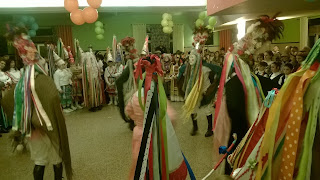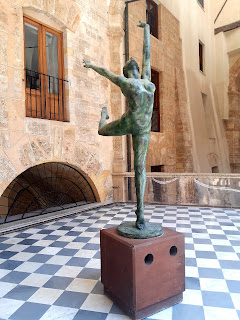Carnival in Sicily - "A Màschira" of Cataffi
 |
| Scenes from the Carnevale at Cataffi |
February
is Carnival Season in Sicily – something not to be missed. Streets of most
Sicilian towns and cities are strewn with confetti and streamers sprayed by
children dressed up as nobility or peasants – or even as mafiosi – like some of
the boys in my English class (“How do you say “mafiosi” in English, prof?”).
Carnevale, born in the sixteenth century to celebrate
the end of the old year and party like mad before the asceticism of Lent, evolved through the centuries. In the 1700s
“Abbatazzi”, or folk poets, similar
to the Irish Bard, improvised rhymes along the streets of Acireale, one of
Sicily’s most famous carnivals. The 1800s brought the parade of decorated
horse-drawn carriages, while the twentieth century introduced floats led by
speers, accompanied by characters in papier-maché masks and fancy dress.
Le
Maschere Tradizionali originate in the sixteenth century Italian Commedia dell’Arte, characterised by
masked stereotypes and improvised sketches. Traditional stock characters are
Pulcinella, Harlequin, Dottore Balanzone, Pantalone and Colombina, the only
female character. You can read more about them here. This is where the
satirical, burlesque nature of carnival comes from, and it reaches its most outrageous in the Grotesque floats of Acireale, where Sicilians give vent to
political frustrations.
This
year, the carnival of Cataffi really impressed me. "A Màschira" celebrates the 1544
battle against Saracen marauders seeking to rape and pillage their way from the
coast to the hilltop town of Santa Lucia. But they met their match in the
villagers of Cataffi hamlet, and Barbarossa and his Turkish pirates were
banished forever. From then on villagers celebrate the victory by dressing up
in the amazing attire of their erstwhile enemy.




Comments
Post a Comment